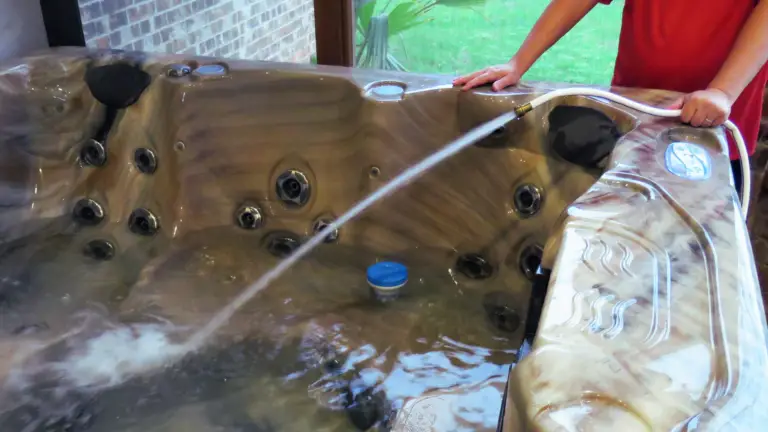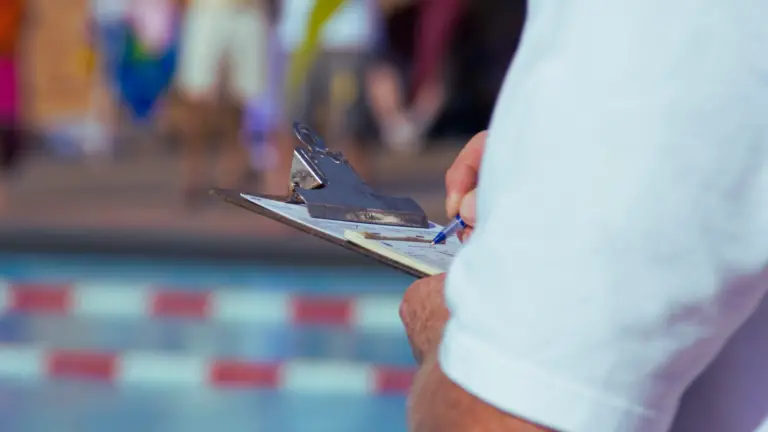As a longtime swimmer and coach, I’ve often been asked, “What exactly is a lap in swimming?” It’s a simple question, but the answer is more nuanced than you might think. Just like running a lap on a track, lap swimming involves covering a certain distance. But how we define that distance in the context of a swimming pool is where things get interesting. This article aims to shed light on the concept of a lap in swimming and its importance in your swimming routine.
Defining a Lap in Swimming: Lap vs. Length
In swimming, one lap refers to swimming from one end of the pool to the other and back. This means a complete trip around the pool, bringing you back to where you started. Unlike sports like running, where a lap means a complete trip around the track, in swimming, a lap is often considered to be a round trip. This can be a bit confusing for those new to the sport, but you’ll get the hang of it!
A common question is the difference between a lap vs. length in swimming. One length refers to swimming from one end of the pool to the other. Therefore, to complete one lap in swimming is typically two lengths of the pool.
Laps in Short Course vs. Long Course Pools
The concept of a lap remains the same in both short course and long course pools – it’s a swim from one end of the pool to the other. However, the difference lies in the length of the pool, which affects the number of laps a swimmer completes for a given distance.
In a short course, which is a 25-meter pool (or 25-yard pool in the U.S.), a swimmer needs to complete more laps to cover the same distance as in a long course pool. For instance, to swim 100 meters in a short course pool, a swimmer would need to complete four laps.
On the other hand, a long course pool measures 50 meters. Therefore, to swim the same 100 meters, a swimmer would only need to complete two laps. This difference in laps between short course and long course pools can impact a swimmer’s strategy and pacing in a race or workout.
The Importance of Understanding Laps
Understanding what constitutes a lap in swimming is more than just a matter of terminology. It’s a crucial part of tracking your progress and setting goals in your swim workouts. Knowing what a lap is, allows you to accurately track how much you’re swimming. Whether you’re a competitive swimmer aiming for a 50-meter sprint or someone swimming for fitness, counting laps helps you measure your progress and set achievable goals.
Lap Swimming Technique
In lap swimming, a lap is completed by swimming from one end of the pool to the other and back. This is different from simply swimming back and forth without a clear start and end point. While back-and-forth swimming can be a great workout, lap swimming provides a clear structure and allows for more precise tracking of distance swum. It also encourages consistent effort throughout the swim, as each lap should be swum with the same intensity and speed.
Maintaining proper form is crucial when swimming laps. This includes a streamlined body position, efficient strokes, and controlled breathing. Remember, it’s not just about how many laps you can swim but how well you swim them!
Common Misconceptions About Laps in Swimming
One common misconception is that a lap is always a there-and-back swim. While this is often the case, it’s not a hard and fast rule. In some contexts, especially in competitive swimming, a lap can refer to a single length of the pool. Always make sure to clarify what is meant by “lap” in your specific context.
Methods for Counting Laps
Keeping track of how many laps you’ve completed is crucial for measuring your progress. Here are some of the most common methods:
Mental Counting
The simplest method for counting laps is to keep track in your head. This method is great for swimmers who want to focus solely on their swimming without any extra gadgets or distractions. However, it can be easy to lose count or become distracted by other thoughts.
Advantages
Disadvantages
Lap Counter Smartwatches
Another popular method is using an electronic device or smartwatch with a lap timer function that automatically counts the number of laps you swim. These watches are designed specifically for swimmers and offer features such as water resistance and easy-to-read displays.
A great Smartwatch option for recording distance, pace, and stroke count.
Advantages
Disadvantages
Manual Lap Counters
These are devices used to track the number of laps completed. They can be manual, where the swimmer clicks a button each time they complete a lap, or automatic, where the device detects each turn and adds to the lap count.
Get my favorite manual lap counter here.
Advantages
Disadvantages
Other options to consider might be:
Counting Tiles or Lane Lines: In some pools, the tiles or lane lines may be arranged in a specific pattern that can help swimmers keep track of their laps.
Using a Coach or Partner: In training or competitive scenarios, a coach or partner may keep track of the number of laps for the swimmer. Are you a coach who needs manual flip lap counters for swim meets? Check out my favorite option here.
Overall, the method you choose for counting laps while swimming will depend on your personal preferences and needs. Try out a few different methods and see which one works best for you.
Lap Swimming Benefits
Lap swimming is more than just a way to cool off on a hot day. It’s a full-body swim workout with numerous health benefits.
Improved Cardiovascular Endurance and Muscle Strength: Swimming laps is a fantastic way to build cardiovascular endurance. It works your heart and lungs, and it also strengthens all the major muscle groups in your body.
Effective Calorie Burning and Weight Management: Swimming is known for its calorie-burning potential. Depending on your intensity and speed, you can burn hundreds of calories in just one hour of lap swimming, making it an effective tool for weight management.
Mental Relaxation and Stress Relief: The repetitive motion of swimming laps can be meditative, helping to relieve stress and promote mental relaxation. It’s just you, the water, and the rhythm of your strokes.
Lap Swimming Etiquette and Tips
Whether you’re a seasoned swimmer or just starting out, understanding lap swimming etiquette and techniques can make your swim workouts more effective and enjoyable.
Understanding Lap Lane Etiquette: Sharing pool space can be a challenge, especially during busy times. Always follow lap lane etiquette, such as swimming in a circle pattern, allowing faster swimmers to pass, and taking rest breaks at the corners of the pool to avoid blocking others.
Counting Laps Accurately: Keeping track of your laps is crucial for measuring your progress. Use a lap counter or develop a consistent counting rhythm to ensure accuracy.
Incorporating Interval Training and Variations: To enhance your lap swimming, consider incorporating interval training or stroke variations. This can help improve your speed, endurance, and technique, and it can also make your workouts more interesting.
Lap Swimming as a Training Tool
Lap swimming isn’t just a way to stay fit; it’s a powerful training tool for swimmers of all levels.
Improving Speed and Endurance: Regular lap swimming can help improve your speed and endurance in the water. By focusing on completing a set number of laps in a given time, you can gradually increase your pace and stamina.
Training Plans and Workouts: There are numerous training plans and workouts available for lap swimmers, from beginner to advanced. These plans can help you structure your swim sessions to maximize your progress.
Competitive Swimming or General Fitness: Whether you’re training for a competitive swimming event or just looking to stay fit, lap swimming can be tailored to meet your fitness goals. It’s a versatile and effective way to get in a great workout.
FAQs
Conclusion
In conclusion, understanding what a lap is in swimming is crucial for tracking your progress, setting goals, and structuring your swim workouts. Whether you’re a competitive swimmer or just swimming for fitness, knowing how to count your laps can make your swim sessions more effective and enjoyable. So, the next time you hit the pool, remember these tips and dive into your lap swimming with confidence. Happy swimming!






